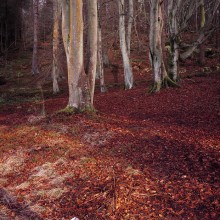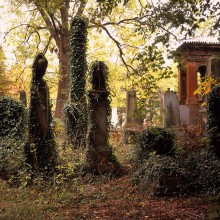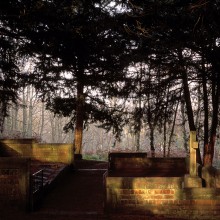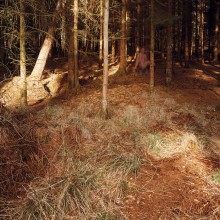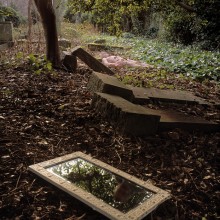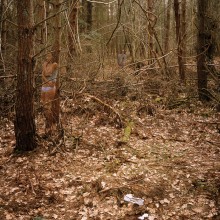Artist Philip Braham discusses his photographic series which recalls an old master and looks at where photography as a medium is heading
As a painting student at art school in the late 1970s I was forbidden from pursuing photography, as it was not considered Fine Art. Fortunately, Joseph McKenzie was passionately anti-establishment and welcomed me into photography just to cock-a-snook at Senior Management. From then until now photography has felt like a guilty pleasure I indulge in alongside my painting practice. I often spend several years working on a single project, picking it up when I can and dropping it when I have to. This unhurried approach allows ideas to percolate, and time becomes a sub-plot as seasonal changes affect the landscape subjects. I use a Fuji 6 x 9 cm film camera, so even the process of seeing the images is slow and laborious. In ‘Falling Shadows in Arcadia’ there are figures that appear as ghosts that seem preoccupied in a strange ritual of sacrifice and death, metaphorically representing what we experience cyclically in life. Poussin’s memento-mori painting ‘Et in Arcadia Ego’ is recalled in the vivid woodland settings that are reassuringly old, in which the actors are present as traces.
Everyone is a photographer now, but photographs are looked at on screens for only a matter of seconds, liked or passed over, and then forgotten as the next wave of images washes in. There is a democracy in that, but it comes at a cost: we develop a sense of ennui as we are submerged beneath the sea of imagery whose currents and tides pull us this way and that. In response, photographic galleries look to the ‘expanded field’ to bring us fresh experiences, hence the profusion of sculptural installations that include photographic documentation of events that happened elsewhere, or they turn to camera-less photography to subvert the distancing of subject-lens relations. But ironically, collectors have come to value the traditional craft of the print in much the same way that aficionados prefer vinyl records to digital files, so commercial galleries are returning to the limited edition print of the Modernist masters and to contemporary photographers that emerge from that tradition.




